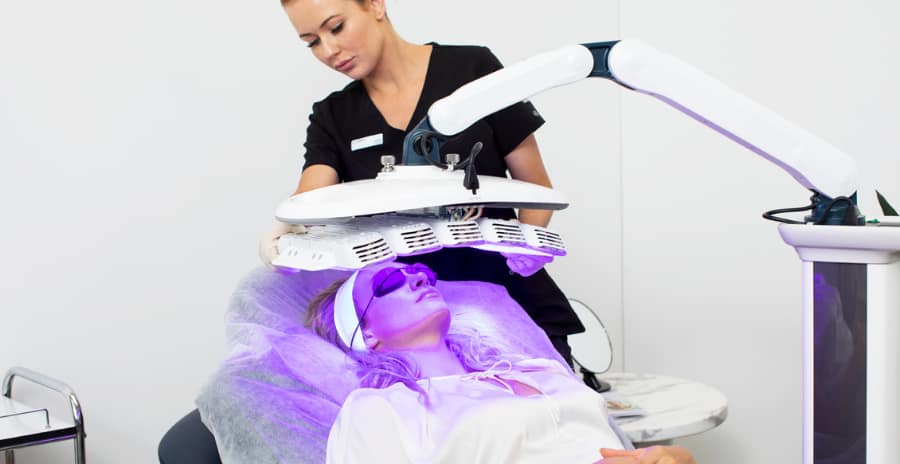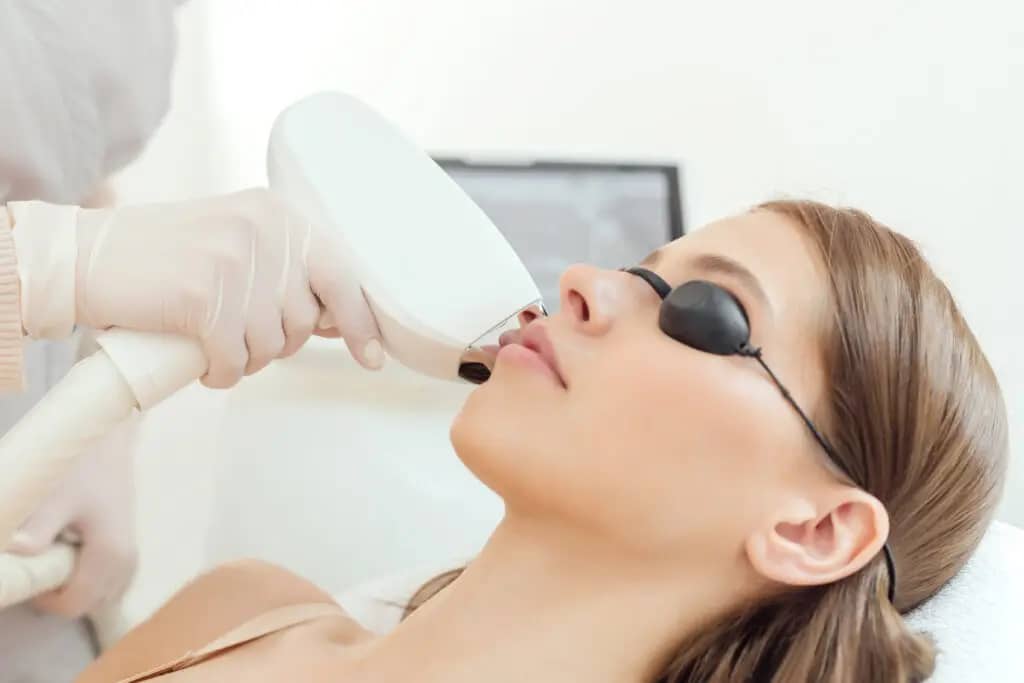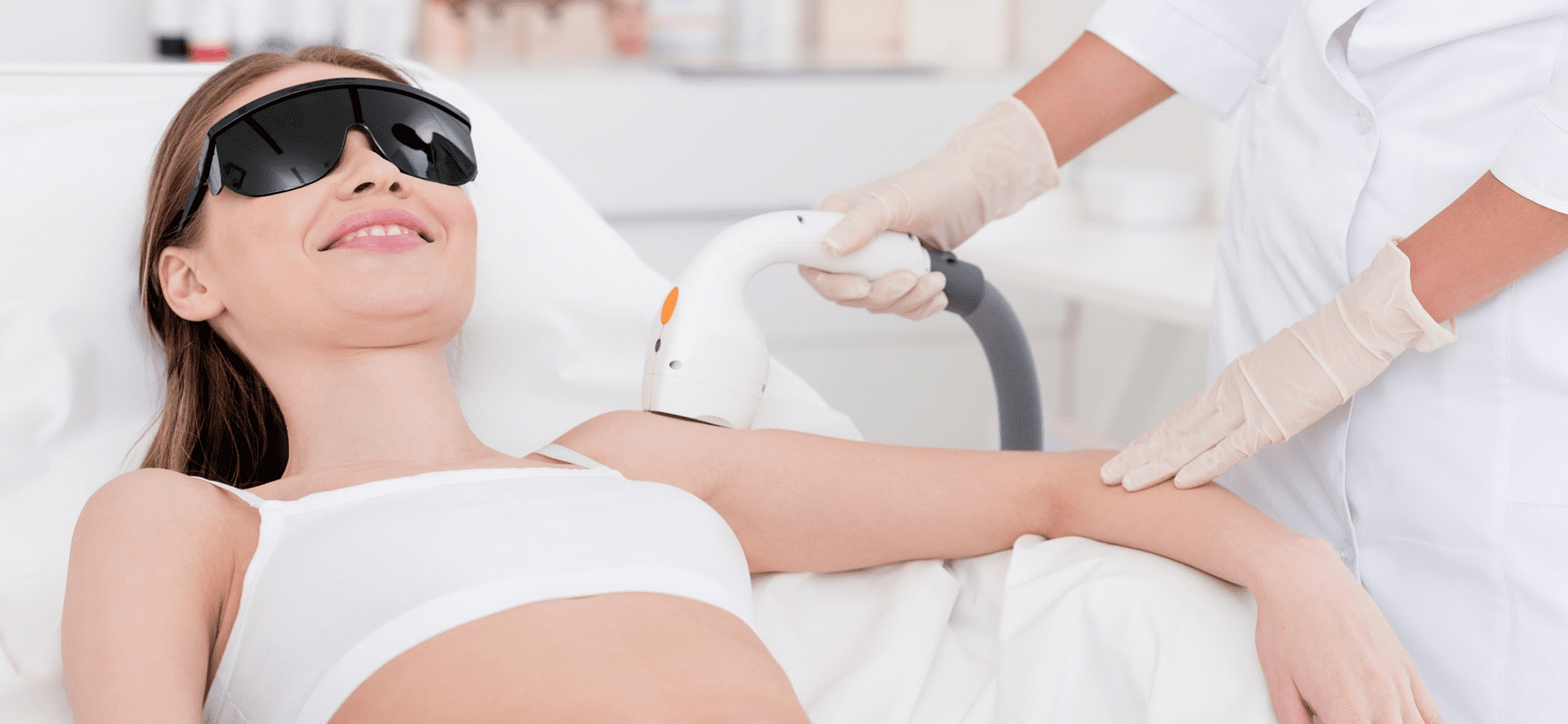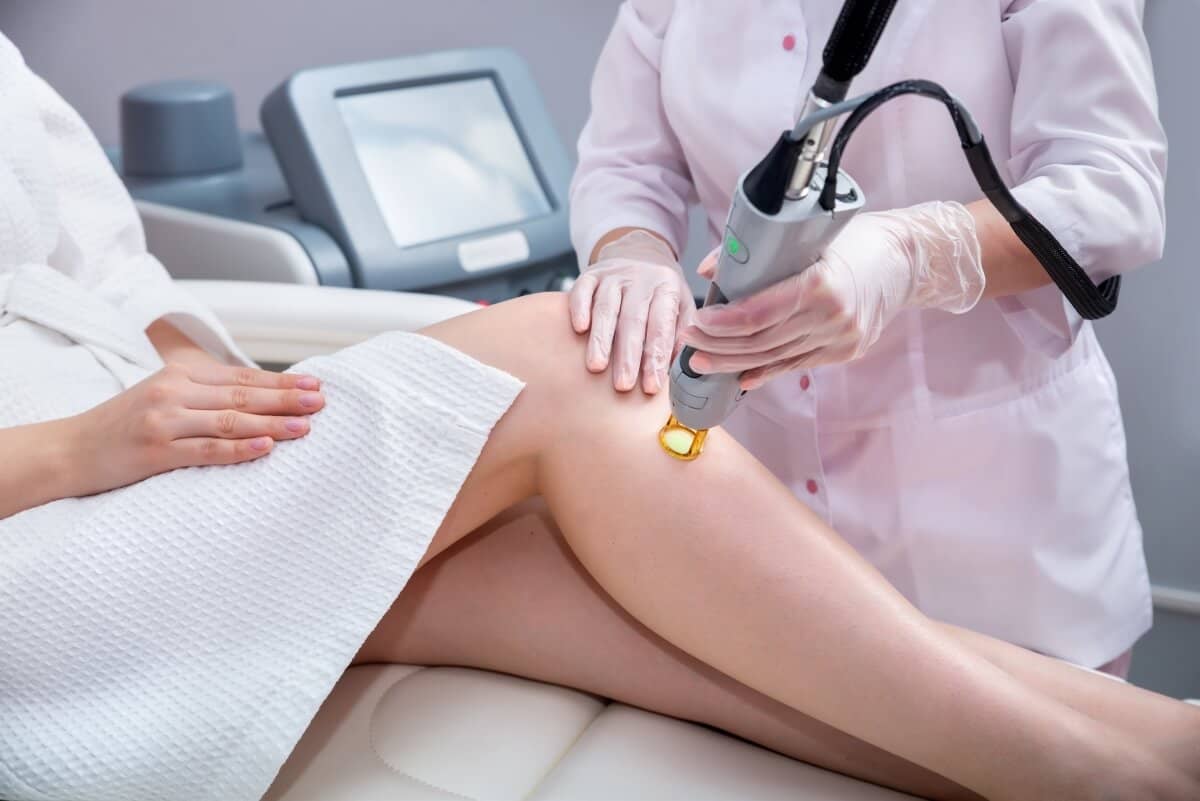Introduction to LED Light Therapy
LED light therapy is a non-invasive treatment that utilizes varying wavelengths of light to address various skin concerns. Originating from NASA research on plant growth in space, this technology has found significant applications in skincare. The therapy involves using light-emitting diodes (LEDs) to emit specific wavelengths that penetrate the skin at different depths, targeting issues such as acne, wrinkles, and pigmentation.
There are several types of LED lights, each serving distinct purposes in skin treatments. Red LED light is known for its anti-aging benefits, promoting collagen production and reducing inflammation. It penetrates the skin deeply, making it effective for diminishing fine lines and improving overall skin texture. Blue LED light, on the other hand, targets the skin’s surface layer, making it effective in combating acne by killing acne-causing bacteria and reducing oil production. Green LED light is often used to address hyperpigmentation, as it helps in breaking down melanin clusters and improving an even skin tone.
The growing popularity of LED light therapy can be attributed to its versatility and effectiveness. It is now a staple in both professional dermatology clinics and at-home skincare routines. Professional treatments often use more powerful devices for quicker, more noticeable results, while at-home LED masks and handheld devices provide a convenient option for maintaining skin health. This increase in accessibility has made LED light therapy a favored choice for individuals seeking non-invasive and effective skin treatments.
Overall, LED light therapy offers numerous benefits for skin health, making it a valuable addition to any skincare regimen. Whether used alone or in combination with other treatments, its ability to target specific skin issues with precision has cemented its status as a highly effective and popular skincare solution.
Combining LED Light Therapy with Chemical Peels
LED light therapy and chemical peels are two powerful skin treatments that, when combined, can offer enhanced benefits for various skin concerns. Each treatment offers unique advantages on its own, but their synergistic effects can significantly improve skin health and appearance.
LED light therapy utilizes specific wavelengths of light to address different skin issues. It is known for its anti-inflammatory properties and ability to promote collagen production, making it an excellent post-treatment for chemical peels. Chemical peels, on the other hand, involve the application of a chemical solution to exfoliate the skin, removing dead skin cells and stimulating new cell growth. This process helps in improving skin texture, reducing fine lines, and treating acne scars.
When used together, these skin treatments complement each other in multiple ways. Post-peel, the skin can be sensitive and inflamed. LED light therapy can help speed up the healing process by reducing inflammation and promoting quicker skin regeneration. This combination not only enhances the peel’s results but also minimizes downtime, allowing individuals to enjoy smoother, clearer skin more rapidly.
Different types of chemical peels can be paired with specific LED light colors for optimal results. For example:
- Glycolic Acid Peels: Often used for anti-aging and resurfacing, these peels can be paired with red LED light, known for its collagen-boosting and anti-inflammatory effects.
- Salicylic Acid Peels: Ideal for treating acne, these can be complemented with blue LED light, which targets acne-causing bacteria and helps reduce breakouts.
- Lactic Acid Peels: Gentle yet effective for hydration and mild exfoliation, these peels work well with yellow LED light, which can improve skin tone and texture.
By carefully selecting the appropriate LED light color to match the type of chemical peel used, individuals can achieve maximized benefits from these combined skin treatments. This strategic pairing not only enhances the effectiveness of each treatment but also promotes overall skin health and rejuvenation.
Using LED Light Therapy with Microneedling
Microneedling, a popular skin treatment, involves creating tiny punctures in the skin using fine needles. This controlled injury stimulates the body’s natural healing process, promoting collagen and elastin production. As a result, microneedling can improve skin texture, reduce the appearance of scars, and minimize fine lines and wrinkles. Given its effectiveness, combining microneedling with complementary treatments can further enhance its benefits.
LED light therapy, when used post-microneedling, can significantly amplify the positive outcomes of the procedure. LED light therapy involves using specific wavelengths of light to penetrate the skin and deliver various therapeutic benefits. After microneedling, the skin is in a highly receptive state, making it an ideal time to apply LED light therapy to maximize results.
One of the primary advantages of using LED light therapy after microneedling is its ability to reduce redness and inflammation. The procedure of microneedling can leave the skin feeling irritated and looking red. LED light therapy, particularly in the red wavelength (around 630-700 nanometers), can help calm the skin, reduce redness, and accelerate the healing process by promoting cell regeneration.
Additionally, blue LED light (around 405-420 nanometers) can be beneficial post-microneedling for its antibacterial properties. This wavelength helps reduce the risk of infection and can be particularly useful for individuals prone to acne or other skin conditions that involve bacterial involvement.
Another effective wavelength is near-infrared light (around 700-1200 nanometers), which penetrates deeper into the skin. This type of LED light can enhance the overall healing process by promoting deeper tissue repair and further boosting collagen production. Combining these specific LED light colors with microneedling can provide a comprehensive approach to skin rejuvenation, ensuring optimal results and a more rapid recovery.
In summary, the synergy between microneedling and LED light therapy offers a powerful skin treatment combination. By understanding how these treatments complement each other, individuals can achieve enhanced skin texture, reduced inflammation, and faster recovery, leading to healthier and more radiant skin.
Enhancing Results with LED Light Therapy and Topical Treatments
Combining LED light therapy with topical treatments can significantly enhance the overall health and appearance of the skin. LED light therapy is renowned for its ability to stimulate collagen production, reduce inflammation, and accelerate wound healing. When synergistically paired with specific topical treatments, the benefits can be amplified, leading to more radiant, youthful skin.
Certain topical treatments are particularly effective when used in conjunction with LED light therapy. Products containing antioxidants, such as vitamin C serums, help to neutralize free radicals, thereby enhancing the skin’s repair processes. Antioxidants also have a photoprotective effect, making them ideal for use after LED light exposure. Similarly, hyaluronic acid-based products are excellent for retaining moisture and plumping the skin. Applying a hyaluronic acid serum before an LED session can help to hydrate the skin, making it more receptive to the benefits of the light therapy.
Retinoids, known for their anti-aging properties, can also be a good match with LED light therapy. These compounds promote cell turnover and collagen synthesis, complementing the collagen-boosting effects of the LED treatment. However, it is crucial to apply retinoids after the LED therapy session to avoid any potential irritation from the light exposure.
When incorporating these topical treatments, it is essential to apply them in the correct sequence for maximum efficacy. For example, serums and lightweight products should be applied before heavier creams or masks. If using a hydrating serum, it should be applied before the LED light therapy session, while antioxidant-rich creams can be applied afterward to protect and nourish the skin.
Despite the numerous benefits, certain precautions should be observed. It is important to avoid products that may cause photosensitivity, such as specific retinoids and acids, immediately before LED light therapy. Additionally, individuals with skin conditions like rosacea or severe acne should consult a dermatologist before combining these treatments to avoid potential exacerbation of their conditions.




